Non-slip tapes for smooth surfaces
The greatest risk for passers-by and workers occurs on stairs, ladders, ramps, flat industrial floors, vehicle steps, especially when it is cold, wet, and the environment is not clean. Sticky, rough strips help prevent slip and fall accidents.
Introducing 25 - 100mm wide, R13 (allows standing on 35º inclined surfaces), R11 (allows standing on 19– 27º inclined surfaces) and R10 (allows standing on 10– 19º inclined surfaces) slip class abrasive tapes. GRIP+ class anti-slip tapes have larger grains than standard tapes, so they remain non-slip even when they are very dirty or are used very intensively.
SUSTAINABLE (Germany) produces classic, black/yellow and black non-slip tapes, o TAPES 1A (Germany) offers an extremely wide range of tape colors. The bright stripes are visible from further away and this increases safety even more. The most economical position in the assortment - 50mm wide, black/yellow MOTTER (France) non-slip strips.
Non-slip tapes are suitable for gluing on various types of smooth surfaces, indoors and outdoors, in an environment protected from direct environmental effects (under the roof). ultra thin R11 - R10 slip class non-slip floor marking tapes are suitable for gluing indoors only. Thin, moisture-resistant tapes are harder to get dirty and easier to clean. They are suitable for clean, food and hygienic premises, they are extremely resistant to tearing and wear, and stick quickly. Not only adhesive tapes, but also tear-off tapes are produced.
We recommend sticking the non-slip tapes on a smooth, clean, dry surface at an ambient temperature of +15º - +20º. Before gluing, the surface should be thoroughly washed, degreased, and allowed to dry completely. Before applying the tapes, we recommend sticking a small piece of tape for testing. When gluing longer lines, they should be marked beforehand and gradually glued by pressing the tape well. Special rollers are especially suitable for this. When gluing anti-slip tapes outdoors or to low-quality surfaces, it is necessary to use a primer to increase adhesion. In some cases, the edges of the belts may need to be sealed to prevent moisture and grease from getting under them.
-

R13 rough adhesive tape 25mmx15m
24,20 € - 30,25 € -
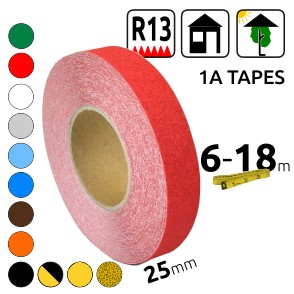
R13 rough adhesive tape 25mmx6/18m
13,31 € - 43,56 € -

R13 extra rough adhesive tape 25mmx6/18m
15,73 € - 41,14 € -
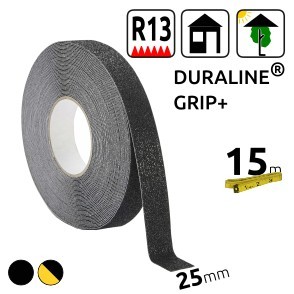
R13 extra rough adhesive tape 25mmx15m
29,04 € - 36,30 € -
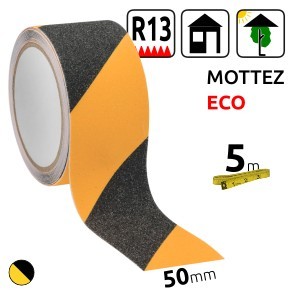
R13 rough adhesive tape 50mmx5m
8,35 € (6,90 € without VAT) -

R13 rough adhesive tape 50mmx15m
48,40 € - 58,08 € -
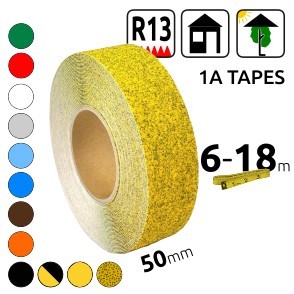
R13 rough adhesive tape 50mmx6/18m
26,62 € - 86,52 € -

R13 extra rough adhesive tape 50mmx6/18m
30,25 € - 83,49 € -
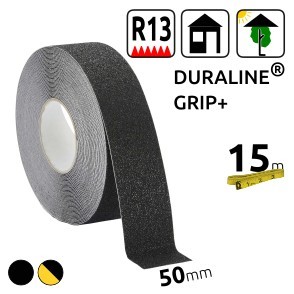
R13 extra rough adhesive tape 50mmx15m
55,66 € - 71,39 € -
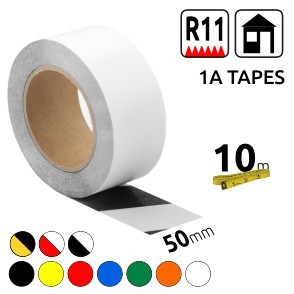
R11 rough adhesive tape 50mmx10m
76,23 € - 87,12 € -
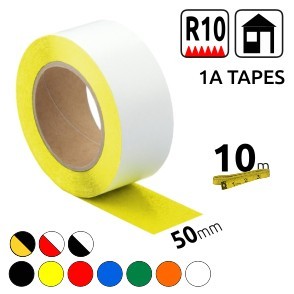
R10 rough adhesive tape 50mmx10m
117,37 € - 133,10 € -
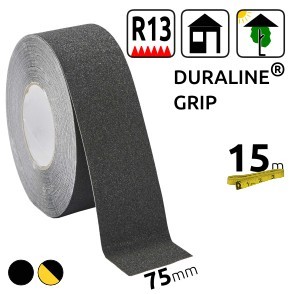
R13 rough adhesive tape 75mmx15m
72,60 € - 88,33 € -
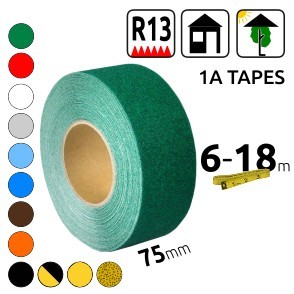
R13 rough adhesive tape 75mmx6/18m
39,93 € - 129,47 € -

R13 extra rough adhesive tape 75mmx6/18m
45,98 € - 124,63 € -
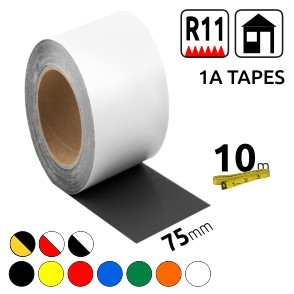
R11 rough adhesive tape 75mmx10m
114,95 € - 130,68 € -
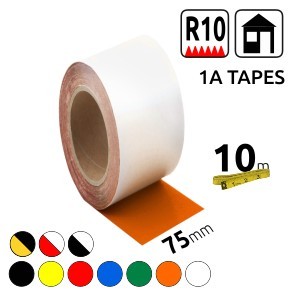
R10 rough adhesive tape 75mmx10m
176,66 € - 200,86 € -

R13 rough adhesive tape 100mmx6/18m
53,24 € - 173,03 € -
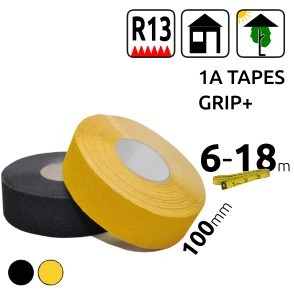
R13 extra rough adhesive tape 100mmx6/18m
60,50 € - 165,77 € -
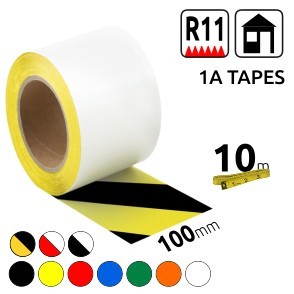
R11 rough adhesive tape 100mmx10m
152,46 € - 174,24 € -
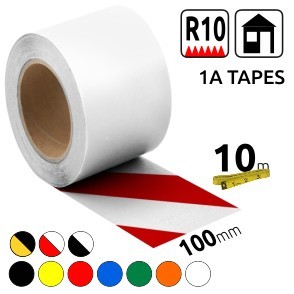
R10 rough adhesive tape 100mmx10m
235,95 € - 267,41 € -
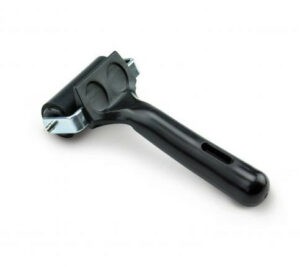
∅27x57mm short adhesive roller
14,52 € (12,00 € without VAT) -
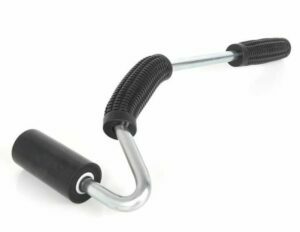
∅35x74mm long glue roller
59,29 € (49,00 € without VAT)
